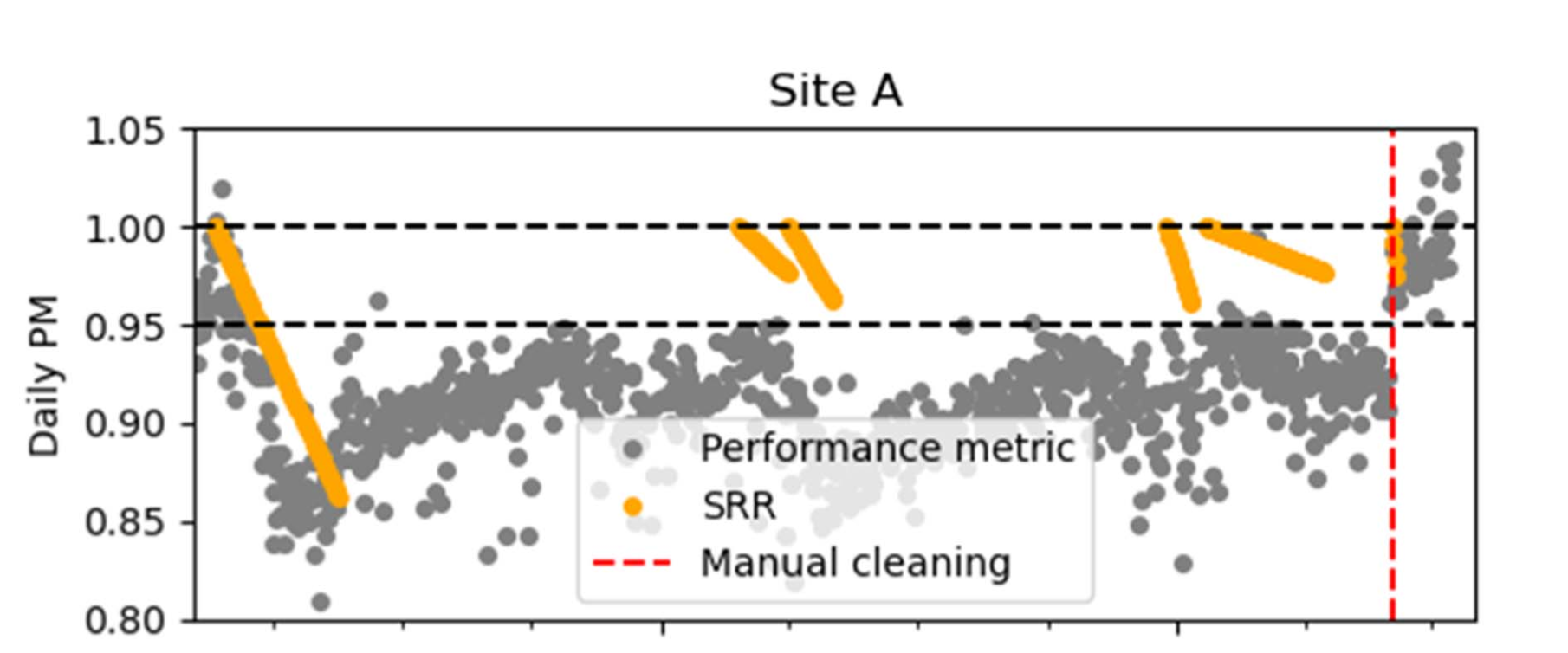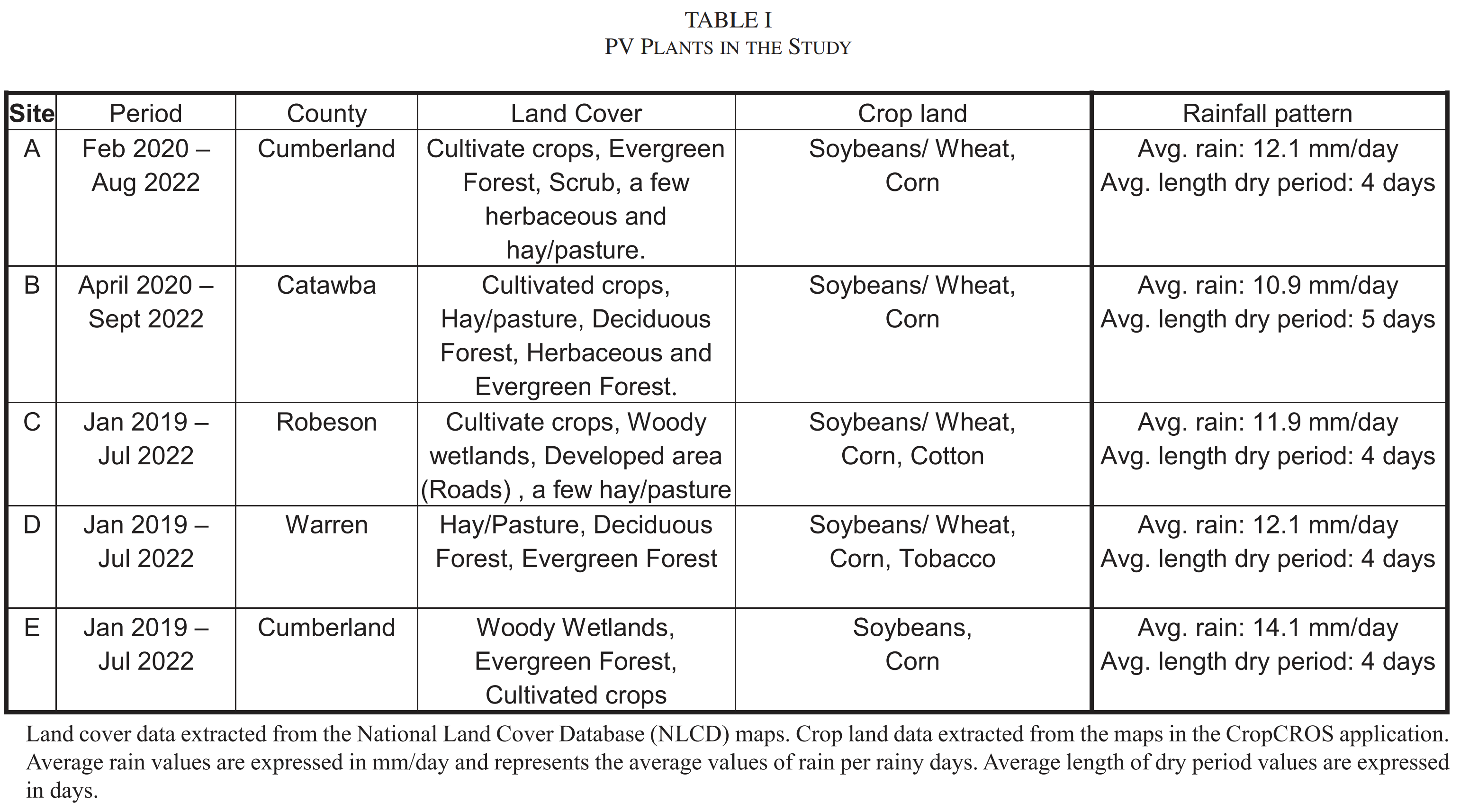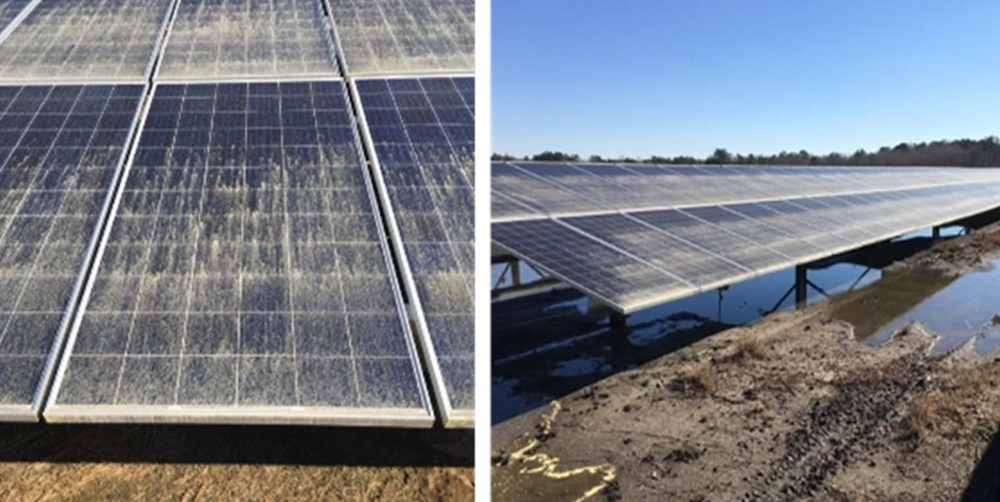From pv magazine USA
A collaborative study by experts from NREL, Duke University, Solar Unsoiled, the University of Jaén in Spain, and Sapienza University of Rome has cast light on the assumption that rainfall alone can effectively clean solar panels.
In their examination of different pollens at five solar power facilities in North Carolina, the researchers discovered that pollen from tree species such as cypress, juniper, pine, and oak proved particularly stubborn in adhering to solar panels.

During peak pollen seasons, variations in pollen types led to a decrease in solar panel efficiency by as much as 15%. Despite the rain “cleanings,” unwashed panels suffered approximately 10% annual production loss. Manual cleaning with a wet brush, after rain, showed a performance increase of 5% to 11%.
The facilities studied, ranging in capacity from 4 MW to 9 MW, face due south at a 20-degree angle and have been operational for approximately seven years.
Popular content
The researchers initially expected minimal soiling losses due to the area’s relatively high average rainfall and short dry spells. In testing, however, they found that the soiling and associated generation losses exceeded their expectations.

This data set is not universally applicable nationwide, as pollen types and intensities vary across regions. Deserts primarily contend with dust, but agricultural areas in these regions also face pollen challenges during certain seasons. Facilities on the US east coast, characterized by a generally wetter climate and dense tree cover, consistently encounter pollen-related challenges.
In this study, tree pollen was the predominant type affecting the sites during the spring, significantly impacting solar generation. The researchers observed that grass and weed pollens, which peak towards summer’s end, did not correlate with the highest soiling losses on solar panels, unlike tree pollen.

NREL and Solar Unsoiled will continue their research to gain a deeper understanding of the issue. They noted that pollen particles from different trees have varying adhesion levels, influenced by factors such as the size and shape of the grains, the nature of the surfaces they stick to, their compositional properties, and environmental conditions like relative humidity and wind patterns.
To continue reading, please visit pv magazine USA.
This content is protected by copyright and may not be reused. If you want to cooperate with us and would like to reuse some of our content, please contact: editors@pv-magazine.com.


4 comments
By submitting this form you agree to pv magazine using your data for the purposes of publishing your comment.
Your personal data will only be disclosed or otherwise transmitted to third parties for the purposes of spam filtering or if this is necessary for technical maintenance of the website. Any other transfer to third parties will not take place unless this is justified on the basis of applicable data protection regulations or if pv magazine is legally obliged to do so.
You may revoke this consent at any time with effect for the future, in which case your personal data will be deleted immediately. Otherwise, your data will be deleted if pv magazine has processed your request or the purpose of data storage is fulfilled.
Further information on data privacy can be found in our Data Protection Policy.